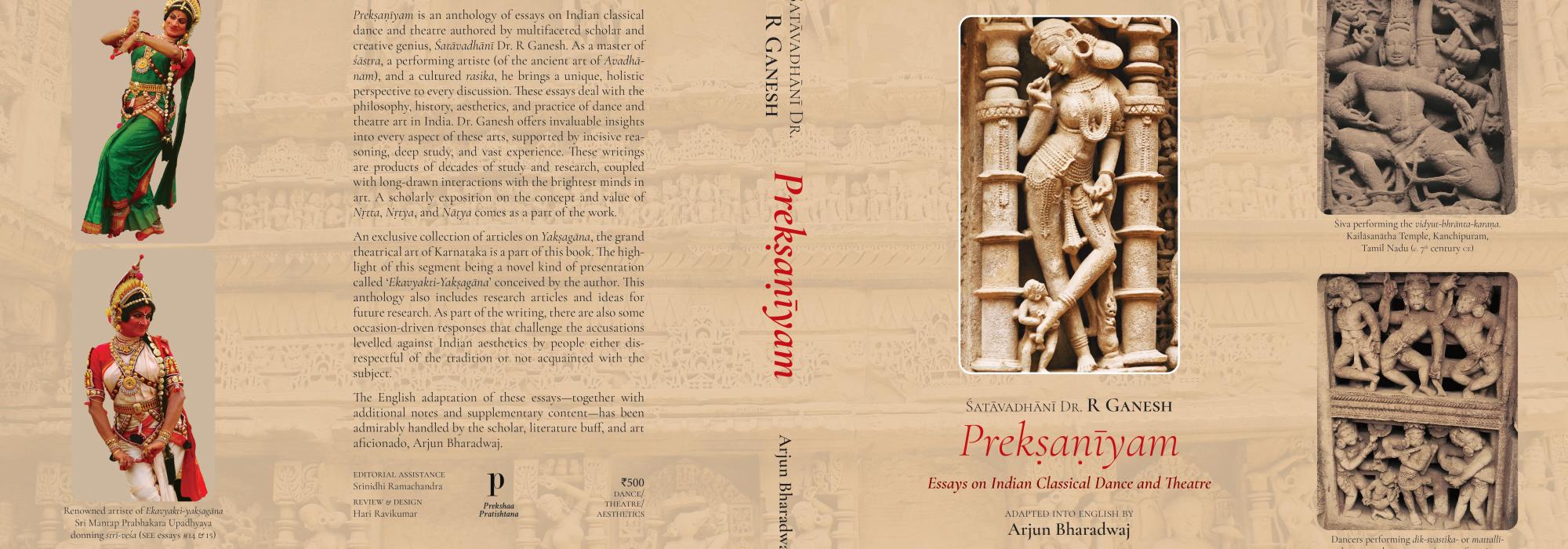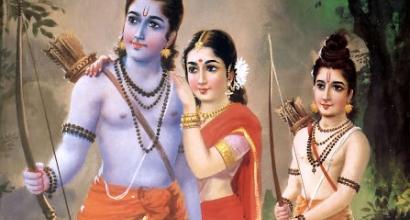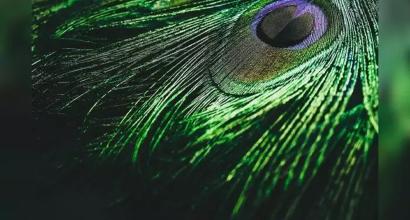One of the most important contributions of the second edition is the article titled, ‘Aesthetics and Interconnectedness of the Daśa-rūpakas, Upa-rūpakas, and Nṛtya Traditions’.
This article is a very exhaustive one, both in terms of data and insights. This article gets a robust start with the analysis of the terms Anukaraṇa and Anukīrtana. This talks about the difference between classical arts and non-classical arts, between art becoming alaukika or remaining mundane and so on.
The author says, ‘we can also say that anukaraṇa and anukīrtana are like karma-kāṇḍa and jn͂āna-kāṇḍa respectively – the former leads to the latter and the latter inspires the former; though the two are different, the former subserves the latter.’ This quote says the purpose and limitation of anukaraṇa and the means of attaining the desired anukīrtana. This understanding is of utmost importance for an artiste. Many times the amateurs (inclusive of senior artistes sometimes) think that perfection in anukaraṇa is art. Unfortunately, they do not realise that perfection in anukaraṇa may be considered as one of the qualifications of becoming an artiste; he/she is ready to look towards anukīrtana which is the next step. Many times, sadly, teachers also get trapped in the narrow thought that the student must cling on to anukaraṇa of the teacher’s choreography for lifetime which alone is the testimony for devotion to the teacher and art at the same time. Here too the teacher is misleading the student at all levels-technically, artistically, and spiritually! Worship of anukaraṇa leads to stagnation and almost death of the ‘artiste’ in the person. Anukīrtana should be the vision for a true art seeker. It should be encouraged and appreciated. Hope the above thoughts of the author of the book bring in that betterment in understanding and approach for the artistes.
The insights provided by the author in connection with the ten rūpakas described in the Nāṭyaśāstra are exemplary. The author has brought in the concepts of adhi-bhūta, adhi-daiva and adhyātma in the classification of the rūpakas which he has reasoned convincingly. He says, ‘Nāṭaka and Prakaraṇa are essentially rooted in adhyātma (the realm of universal human emotions), while Ḍima and Samavakāra lay greater emphasis on adhi-daiva (the realm of faith and belief) …. Vyāyoga, Aṅka and Īhāmiṛga have undertones of adhi-bhūta (material world) with some traces of adhi-daiva… The three genres, Prahasana, Vīthi, and Bhāṇa are thus, rooted in everyday life of common men, i.e., adhi-bhūta…. Nāṭikā swings between adhyātma and adhi-bhūta with a greater emphasis on the latter.’ This classification by itself gives room for so many suggestions in the treatment of the themes which seems to so loyally match with Bharata’s vision in the Nāṭyaśāstra.
The exhaustive list of upa-rūpakas is unparalleld. It is overwhelming to read through the compilation of every detail possible about every form of upa-rūpaka and commenting on the possibilities of the scope of handling them, also analysing how these forms have semblance to existing dance forms of today, sometimes giving the comparative analysis between the upa-rūpakas themselves; it is difficult to say where actually their treatment stops. One thing is clear that this work on this subject is unprecedented. All those who want to work with reconstructions or revivals have an exhaustive and authentic documentation, interpretation, and direction to them. Upa-rūpakas do not constitute mere presentation of grammar of āṅgika and vācika but are nṛtta/nṛtya/nāṭya-bandhas and are meant to evoke Rasa. Hence mere technical analysis of the grammar of āṅgika will not suffice. The vastu must be addressed. Earlier Dr. Raghavan has done commendable work on this subject, but the author’s article goes into deeper levels and has enhanced the possibilities of practical research on these topics.
The biggest gift has been the appendices. Though most of the times appendices are used to supplement the main article with some more supportive data, with respect to this article, appendices have been more insightful than the main article in many places. For example, the author beautifully summarises with respect to arthaprakṛtis, avasthās and sandhis as follows:
‘The following can be said when the triad formed by arthaprakṛti, avasthā, and sandhi, is viewed from the perspective of the Rasa-sūtra – though, the three are united in purpose and appear more or less similar to each other, they capture certain shades of difference. Sandhis help in the delineation of episodes; Arthaprakṛtis help in adding colour to the presentation and bringing vividity to the plot; Avasthās help in the depiction of the emotions and mannerisms of different characters… sandhis provide ample scope for establishment of uddīpana-vibhāvas, while arthaprakṛtis can help portray anubhāvas; the avasthās largely depend on the ālambana-vibhāvas….these three together contribute towards kindling the sthāyi-bhāva latent in the connoisseur and lay a royal path for evoking Rasa.’
The appendix on Vīthyāṅgas and Lāsyāṅgas is filled with insights. In addition to the elaborate details on their categories, the author shows how vīthyāṅgas are more loka-dharmī in general versus lāsyāṅgas which are more nāṭya-dharmī. These he explains through analysis of types of Rasas and Vṛttis which is very logical and interesting. He also gives suggestions of how embellishments in vācika can fetch vīthyāṅgas to step towards nāṭya-dharmī and how lāsyāṅgas when embrace loka-dharmī would resemble folk mannerisms. Such a vision leaves a world of eternal possibilities for creativity. Having said the lakṣana for a characteristic, adding how such lakṣana can be over-stepped only to enhance the vocabulary of the very lakṣana is brilliant and most desirable.
This analysis is the first of its kind. What more to ask for when every aspect of lakṣana caters to Rasa. Without being illumined by the true purpose, any classification is a burden, a pain. When data remains unrelatable to practice, it has to only be sadly memorised, and that too upon compulsions for apparent scholarship! But when data becomes the basis for realisation, there is revelation and re-creation of the same; the author achieves this even in the case of the most challenging classifications!
IV
The next set of articles on Yakṣagāna widely covers the Caturvidha-abhinaya of this theatrical form. There may be more material after this coverage (in future), but it is highly doubtful whether such vision be conceived by any writer ever again. The articles titled- ‘Yakṣagāna and its Allied Forms of Art’, ‘Yakṣagāna – Traditional Deśī Theatre: Resolving Misconceptions’, ‘The Āṅgikābhinaya of Baḍagutiṭṭu Yakṣagāna’, ‘Possibilities of Innovations and Reformations in Yakṣagāna: Some Thoughts’ and ‘Strī-veṣa of Paḍuvalapāya Yakṣagāna – Aesthetics and Suggested Refinements’ have summarised the Yakṣagāna-loka from various perspectives of tradition, technique, content and its aesthetics.
Some critical comments have appeared for the good of the Yakṣagāna artistes. The author does not shy away from showing the strengths and weaknesses of the same point of criticism. The following quote may help provide clarity –
‘The extempore delivery of dialogues in Paḍuvalapāya Yakṣagāna is unparalleled in its exuberance. Its excellent vācika has resulted in the growth of Tāla-maddale, an independent form of performing art that abounds in bhāratī-vṛtti. The evolution of this art stands as a testimony for the brilliant peaks the artistes of Paḍuvalapāya Yakṣagāna have attained in vācika. Nevertheless, it would not be an exaggeration to say that this exuberance of spoken word can be detrimental for the complete and holistic Yakṣagāna theatre. In contrast, Kūcipūḍi and Kathakalī, which have very minimal or no spoken dialogue have achieved fineness in Āṅgikābhinaya and Sāttvikābhinaya.’
Such criticism though may seem sharp tongued superficially, but in purpose, contributes to the betterment of the art form if taken seriously by the practising artistes by bringing in conscious modifications and restraint wherever needed. I would take this opportunity to say that this book may be seen as a model for approach towards art criticism, whose purpose, approach, and content are all in a sad state today. The scholars, practitioners, and art lovers who are passionate about art criticism may note this point. When a critical point is made (especially a negative point), it is important to be substantiated by evidence, examples, and direction towards betterment. When the critic is sure about all these aspects, he will dare to tell it quite outrightly, though he may choose to be mild in his language (unlike the author of course, whose style is to call a spade a spade!).
Many times, for the author, Yakṣagāna has only been an instrumental form and name to philosophise many concepts. While discussing how it is baseless to categorise Yakṣagāna as a mere form, the author elaborately discusses the concepts of mārga and deśī. This section is one of the most significant contributions to bring the dawn of knowledge and understanding into the ignorant and the confused minds of today’s artistes who are unable to appropriately place even the technique and the content; when such is the case, it is too much to ask if they have a vision for their artistic life.
To be continued...









































